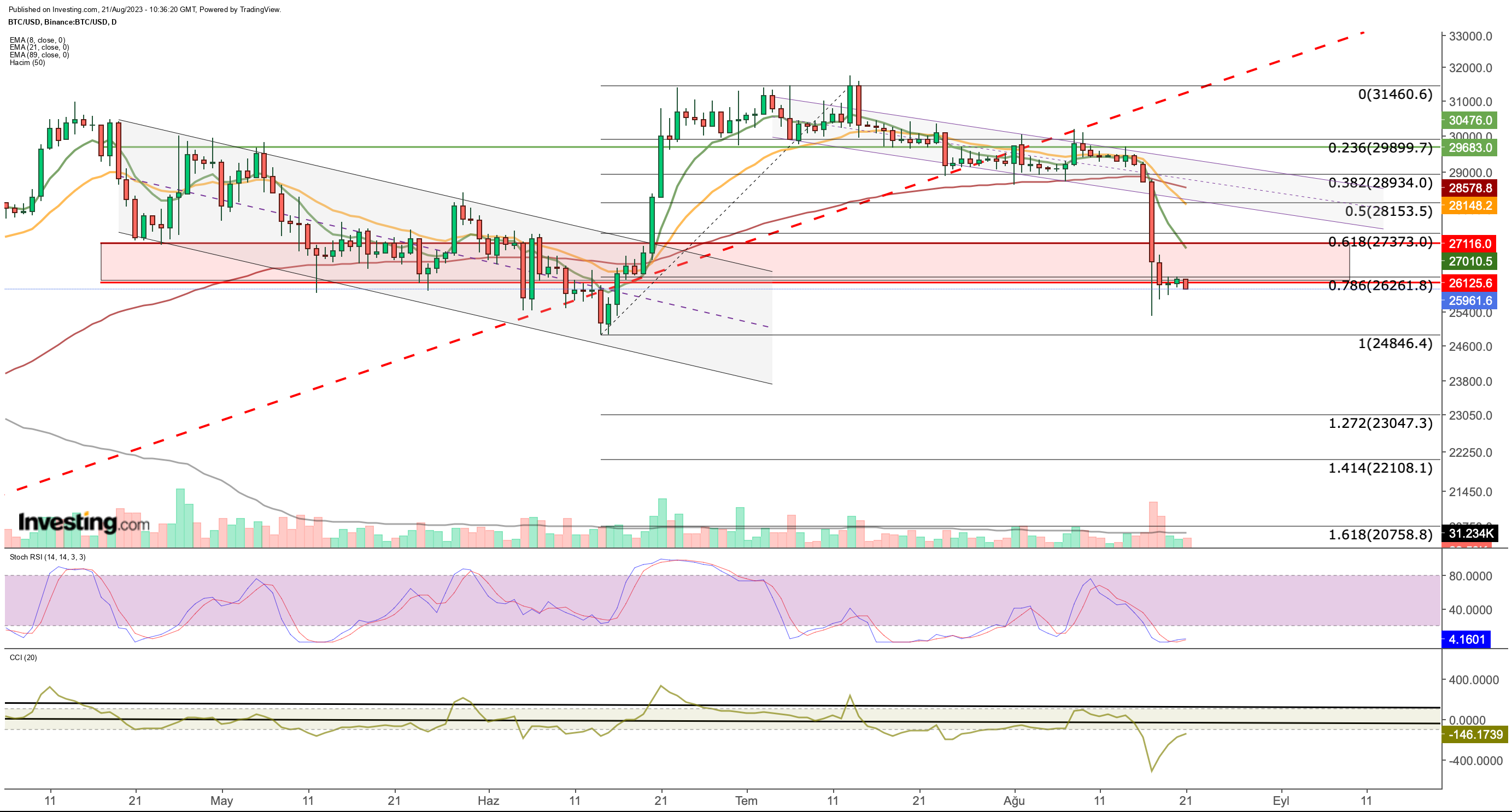- Bitcoin has been under selling pressure over the past week
- Currently, the crypto is trading near a critical support level
- The broader outlook remains bearish, and downside risks persist
The past week dealt a blow to Bitcoin's recent uptrend that started in June, steering us toward a critical support zone.
Buyers jumped in when the price reached $25,300, putting a stop to the selling frenzy and showing that demand remains alive in the $25,000 region. As a result, Bitcoin started to find its footing around the $26,000 range.
When we assess the broader outlook, however, the lack of sufficient buyers above those levels indicates that the downside risk persists. The current levels had previously served as a support zone during the broader bearish movement from April to June.
During that period, as predictions of further declines for Bitcoin gained traction, the BlackRock's Bitcoin ETF application news intervened and acted as a catalyst for the cryptocurrency's movement toward the $30,000 range.
Looking ahead, the remaining days of August are not expected to bring data that could significantly impact Bitcoin. The confirmation of hawkish views from the FOMC minutes negatively influenced the crypto, leading to a drop. Moreover, Chinese real estate giant Evergrande (HK:3333)'s bankruptcy filing in the US helped slash global risk appetite.
From a technical perspective, we will be closely monitoring the $26,200 range to determine if these two events have been factored into the pricing. Daily closures above this price level may motivate new buyers to enter the market.
Furthermore, during the downturn, approximately $1 billion worth of futures positions were liquidated. This gives the impression that a potential bottom could be forming in the short term.
In 2023, the support zone at $26,000 has been critical. However, if it breaks, the new support line may shift to $24,000. The absence of a catalyst to spark an upward movement could pave the way for the continuation of the downtrend.
As long as the Bitcoin price remains below $26,200, it appears likely that it could test the $24,000 level eventually. But before that, the next support line at $24,800 will come into play, and should that be breached, the range of $20,800 to $23,000 might become a focal point.
To facilitate a potential upward momentum, the key lies in establishing a foothold above the $26,200 level. Subsequently, should Bitcoin manage to surpass the $27,300 threshold in its next move, it could break free from the downward trend and initiate a recovery process.
Even though the spot Bitcoin ETF may not have received approval yet, a positive decision could still have a significant impact, especially with its expected release in September.
Based on these analyses, it seems that there may be a fluctuation between $24,800 and $27,300, with $26,200 being a key reference point for the next two weeks.
In our regular tracking of technical indicators, the Stochastic RSI peaked during Bitcoin's test of $30,000 this month. Currently residing in the oversold zone on the daily chart, this indicator with a bearish trend could aid the decline as long as it remains below 20.
Additionally, short-term EMA values continue to reflect a pessimistic outlook with a reverse crossover.
Another noteworthy technical observation is that the Bitcoin price accelerated its downtrend following the formation of a daily candle below the 3-month EMA. Historically, this moving average has served as dynamic support since July.
With the Bitcoin price venturing into the negative territory in the current scenario, the downward crossing of the 8 and 21-day EMA values against the 3-month EMA further implies the potential for more decline ahead.
***
Disclaimer: This article has been written solely for informational purposes; it does not constitute a solicitation, offer, advice, consultation, or recommendation for investment, nor does it intend to encourage the purchase of assets in any way. Please note that any type of asset is evaluated from multiple perspectives and carries high risk. Therefore, every investment decision and its associated risks are the responsibility of the investor.

